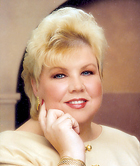
It seems like residents on more drugs have more falls. Is there information I can use to train my staff to watch out for this?
As many as half of residents in facilities are involved in a fall, and many on medication have more severe falls that result in fractures or concussions.
Educate families, residents and healthcare professionals about potential risks of central nervous system (CNS) meds, and benefits of non-pharmacological approaches such as topical NSAIDs, Capsaicin and Lidocaine patches.
Before starting a new CNS medication a complete assessment is needed, especially for those who have a history of falls. Another important reference for your team is the 2015 AGS Beers Criteria. Be sure all of your team members have access to this document and understand it — and remember that your “team” includes the resident and family members and loved ones.
There also is a very helpful handout and webinar provided by the Claude Pepper Older Americans Independence Center and the University of Pittsburgh: www.pepper.pitt.edu/documents/PreventFalls_Trifold.
This program points out when and how to decrease CNS drugs, and other things such as Lidocaine patches and NSAIDS that could be used for arthritic pain. It stresses non-pharmacological approaches and how important it is to have the entire team involved.
Remember, with the new regulations residents now need to approve their goals. Care plans do not belong to the facility. They are the resident’s, and the goals must be approved by the resident when he or she is able.
There are a lot of resources available at some of the associations’ websites, such as www.ascp.com and www.nadona.org. It’s also worthwhile to visit www.cms.gov.
From the May 01, 2017 Issue of McKnight's Long-Term Care News




